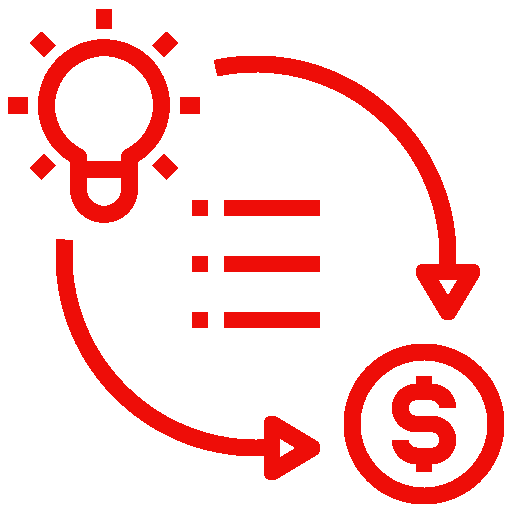Updated on: 03.03.2022

Application:
Lean Canvas
Mapping and description of business models with a focus on customer needs
What is it about?
Lean Canvas enables innovation projects and ideas to be structured and visualised. Here, important company areas are mapped, analysed and aligned in a user-centred way. The core elements of the Lean Canvas include the central factors of problem, solution, unique selling proposition, customer segment and existing alternatives.
Note
It takes a lot of repetition to find the right solution for the client's problem.
What is being done?
In order to get a focus on the needs of the target group right from the start when developing new business models, it is a good idea to create a Lean Canvas. The Lean Canvas is leaner than the Business Model Canvas (BMC) and is particularly suitable for start-ups. It is about the continuous review of small steps.
The core of a Lean Canvas is the interconnectedness of problem and solution. All data collected and elicited can be matched with the best solution. This tool is about designing a solution - problem research is not the focus. Existing gaps are identified and it becomes clear which processes should be tested next.
Especially for start-ups, the Lean Canvas is a suitable tool to define the unique selling proposition. The unique selling proposition (value proposition) can form the core of a Lean Canvas and show how customer problems can be solved or specific needs can be met.

Step-by-step guide
1. gather insights and fill in the first five fields.
2. repeat, adapt and extend content and knowledge
First, the first five fields should be worked on intensively until a stable picture emerges.
3. fill in and elaborate the other fields
These include the following fields:
Colour highlighting for different risk levels and customer segments is recommended.
4. identify and test critical hypotheses
After the Lean Canvas has been created, the most risky assumptions are tested using experiments.
Further guidance on the application of the Lean Canvas
Test hypotheses from the beginning
Once the first Lean Canvas has been created, the first assumptions can be tested. It is advisable to start directly with critical theses in order to be able to make adjustments afterwards, in order to use time effectively and valuably.
Continuous documentation
A core task in the Lean Canvas is repetition and adaptation. During this process, it is advisable to record and document individual progress. This can be done with photos, for example.
Do not fritter away
Each field should receive enough, but not too many Post-Its. If there is too much content, the focus is often lost. Try to reduce the core content to about three to four Post-Its.
Finding the right entry
Usually, the entry point to the Lean Canvas is the problem statement. It is also possible to enter via other fields such as solution, customer segment or unique selling proposition. This is particularly useful for digital business models.
